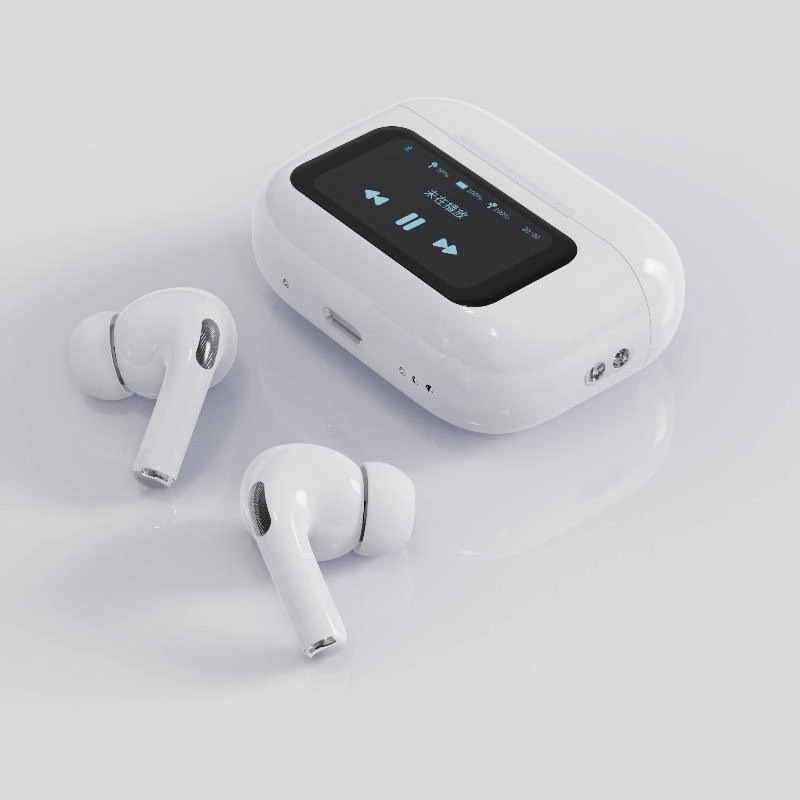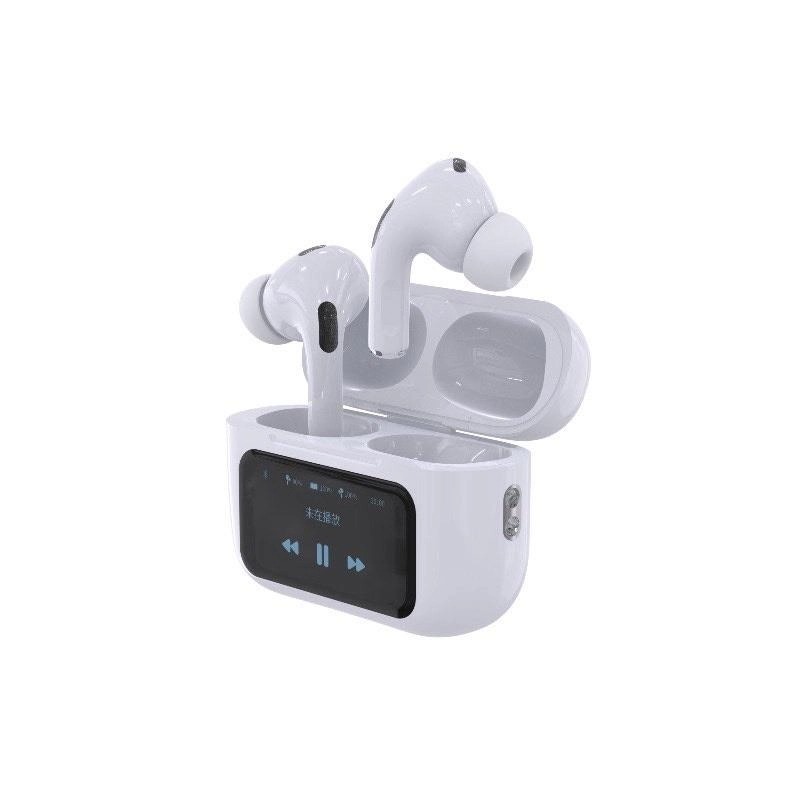-
- AntminerInnosilicon
Can Bluetooth Earphones Cause Headaches?
Views: 192 Author: Site Editor Publish Time: 2025-09-25 Origin: Site

Introduction
Bluetooth earphones have quickly become a daily essential for music lovers, remote workers, gamers, and commuters. Their wireless convenience makes them ideal for multitasking, exercise, and travel. Yet, as their popularity grows, many users have begun to report an uncomfortable downside: headaches after prolonged use. This concern has sparked debates about whether Bluetooth earphones themselves are the cause or whether external factors play a larger role. Understanding the science, ergonomics, and lifestyle influences is essential for anyone who relies on wireless audio and wants to protect their health.
The Connection Between Bluetooth Earphones and Headaches
Bluetooth earphones are designed to transmit audio signals using low-power radio waves. While the energy they emit is considered safe by international health organizations, some individuals report discomfort ranging from mild tension to throbbing headaches after long listening sessions. This phenomenon may not be due solely to radiofrequency exposure but rather a combination of physical, auditory, and environmental triggers. For example, tight earbud designs can increase ear canal pressure, high audio volumes can strain auditory nerves, and prolonged wear may contribute to muscle tension in the head and neck. Understanding these layered factors helps clarify why headaches might arise in some users but not others.

How Bluetooth Technology Works in Earphones
Bluetooth earphones rely on short-range wireless communication that uses frequencies around 2.4 GHz. The radiation output is extremely low compared to mobile phones or Wi-Fi routers. To put this into perspective:
A smartphone can emit up to 2 W of power.
A Bluetooth earphone typically emits less than 0.003 W.
Device Type Average Power Output Exposure Level (Relative) Smartphone (during call) ~2 W High Wi-Fi Router ~0.1 – 1 W Moderate Bluetooth Earphone ~0.001 – 0.003 W Very Low While the radiation risk is minimal, headaches may still occur due to how earphones interact with the body. For example, extended exposure can lead to localized heating around the ear canal, or the brain may interpret persistent external stimuli as stress signals, leading to discomfort.
Physical Pressure and Earphone Design as Headache Triggers
The ergonomic design of Bluetooth earphones plays a crucial role in user comfort. Tight-fitting in-ear models can compress sensitive areas of the ear canal, restricting blood flow or creating localized pressure that radiates as pain. Over-ear headphones may cause strain around the temples or jaw if clamping force is too strong.
Earphone Style Common Pressure Points Potential Discomforts In-ear earbuds Ear canal, inner cartilage Sharp pain, tension headaches On-ear headphones Outer ear, temples Pressure headaches Over-ear headphones Temples, jawline, neck muscles Tension headaches, stiffness For individuals prone to migraines, even slight external pressure can act as a trigger. Choosing models with softer materials, adjustable fit, and breathable design can significantly reduce these risks.
The Role of Listening Habits and Volume Levels
Another overlooked factor is sound intensity. Many Bluetooth earphone users listen to music, podcasts, or calls at volumes above safe levels, especially in noisy environments like public transit. Prolonged exposure to high decibels can fatigue the auditory nerves, contributing to headaches. Studies suggest that listening above 85 dB for extended periods increases the risk of hearing loss and discomfort.
Practical tips include:
Using noise-canceling Bluetooth earphones to reduce the temptation of raising volume.
Following the 60/60 rule: listening at 60% volume for no more than 60 minutes continuously.
Scheduling breaks every hour to allow the auditory system and muscles to recover.
Psychological and Environmental Contributors
Not all headaches linked to Bluetooth earphones come from the device itself. Lifestyle factors amplify the risk:
Screen time synergy: Using earphones while staring at digital screens can create a combined strain effect on the eyes, neck, and brain.
Posture problems: Slouching while working with earphones in can compress cervical muscles, a common source of tension headaches.
Stress amplification: Continuous notifications, multitasking, and sensory overload can trigger stress headaches, with earphones being an accessory rather than the root cause.
By managing these external triggers—through posture correction, mindful screen usage, and relaxation techniques—users can minimize discomfort while still enjoying the benefits of wireless audio.

Are Bluetooth Earphones Safe Compared to Alternatives?
When evaluating safety, it helps to compare Bluetooth earphones with other listening devices.
Device Type Headache Risk Factors Relative Safety Wired Earphones Pressure in ear canal, potential tangling stress Moderate Bluetooth Earphones Pressure, possible RF sensitivity, long use High Safety Over-Ear Wired Headphones Clamping pressure, prolonged wear Moderate Bone Conduction Headphones Lower ear canal pressure, but may vibrate skull High Safety The evidence suggests that Bluetooth earphones are not inherently more dangerous than wired versions. In fact, their wireless nature eliminates tangling and reduces strain from awkward postures. The primary risks are ergonomic and behavioral rather than technological.
How to Prevent Headaches When Using Bluetooth Earphones
Reducing headache risk doesn’t mean giving up Bluetooth earphones altogether. Instead, it involves adopting smart usage habits:
Choose ergonomic designs: Look for lightweight, adjustable earphones with silicone tips.
Moderate volume and duration: Avoid extended listening at high volumes.
Take breaks: Remove earphones every 45–60 minutes.
Mind posture: Keep the spine aligned during desk work or gaming.
Hydrate and rest: Dehydration and fatigue often worsen headaches.
By combining these strategies, users can enjoy wireless freedom while protecting their comfort and health.
Conclusion
Bluetooth earphones themselves are not a direct cause of headaches for most users. Instead, discomfort typically arises from a combination of earphone design, listening habits, volume levels, posture, and lifestyle factors. With proper awareness and preventive measures, anyone can safely enjoy the convenience of Bluetooth earphones without sacrificing well-being. The key lies in recognizing personal triggers and making small adjustments that reduce strain.
FAQ
1. Do Bluetooth earphones emit harmful radiation?
No. The radiation level from Bluetooth earphones is extremely low—far lower than smartphones and Wi-Fi routers—and is considered safe by health authorities.2. Why do I get headaches after using Bluetooth earphones for a few hours?
The likely causes are ear canal pressure, high audio volume, or posture-related tension rather than the Bluetooth technology itself.3. Are noise-canceling Bluetooth earphones safer?
Yes. Because they reduce the need for high volumes in noisy environments, noise-canceling models can decrease the risk of auditory fatigue and headaches.4. Can wired earphones prevent headaches?
Not necessarily. Wired earphones can still create ear canal pressure or encourage poor posture. The difference in headache risk is more about design and usage habits.5. How can I choose the best Bluetooth earphones to avoid headaches?
Opt for ergonomic, lightweight designs with soft tips or cushions. Adjustable fit and noise-canceling features also reduce strain and improve comfort.RELATED PRODUCTS
Leave a MessageShenzhen OB Technology Co., Ltd. We are leading manufacturer in China which specialized electronic products supplying for 10 years.SHOPGraphics CardadaphicsSUPPORTSubscribe to receive updates, access to exclusive deals, and more.























